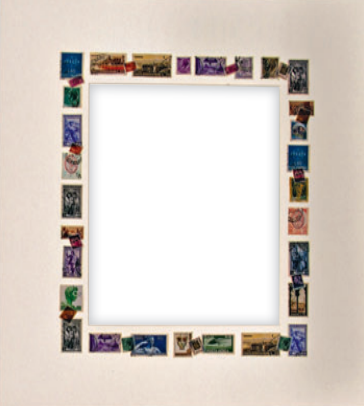Matting is a border that surrounds and supports artwork. It is sometimes called a “window mat” because the border is created by cutting an opening in a piece of board. This opening may be a circle, oval, octagon, or other shape, but most often it is a rectangle. A mat may be made from various materials, but it is usually made from matboard. Mats may be used on all types of paper artwork, needlework, and in some shadow boxes.
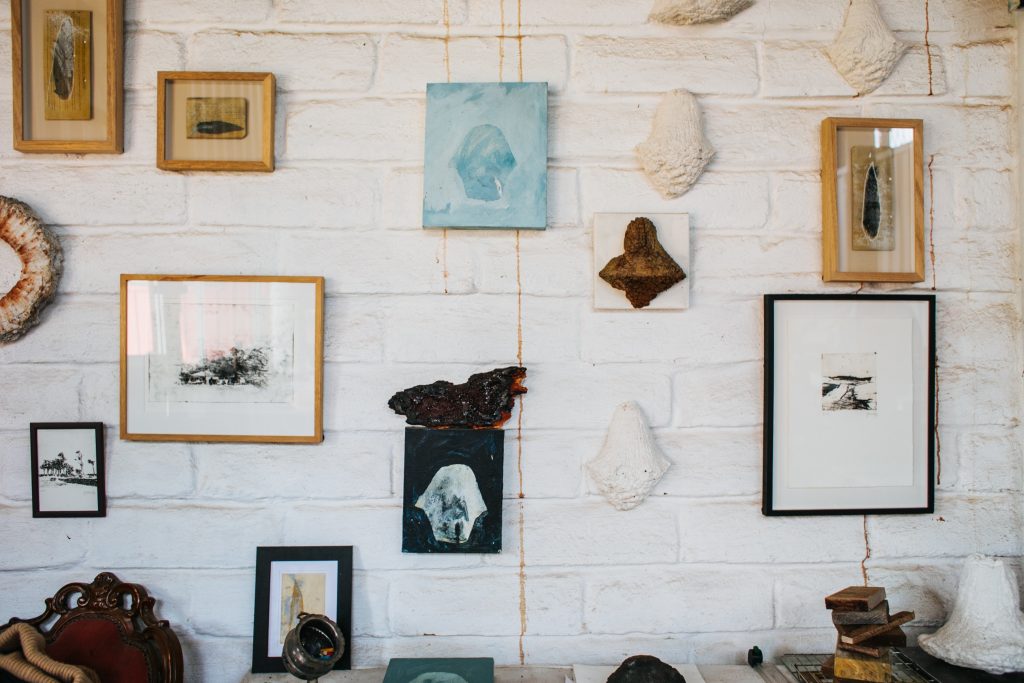
The Purpose of the Mat
The mat plays two very important roles in framing; protection and presentation. The window mat and backing board (a solid sheet of board having the same size as the outer dimensions of the mat) form a sandwich that encloses the art, creating essential air space and protecting the art from contact with the glass and any other materials in the frame. This important protection happens invisibly within the frame, but the other function of the mat, presenting the artwork, is all show.
The decorative aspect of matting is crucial to successful framing. Along with the frame, the color, texture, and dimensions of the mat determine how a piece of framed art is perceived. It is literally the window through which the art is viewed. The colors chosen for a mat can feature a color in the artwork, coordinate artwork to suit room décor, or just tickle the framer’s fancy. The size and shape of the mat can also be used to accommodate different design goals.
The Size of the Mat – How Big Should a Mat Border Be?
To do its job of protecting the artwork, the mat can have fairly narrow borders. But to do its other job i-e creating an attractive presentation for the art, it usually needs more.
Beginners usually like small mat borders, even on large pictures. They fear that too much matting will distract from the art. In fact, narrow mat borders can be very distracting, creating too many lines surrounding the art in a target effect. The lines become the key attraction rather than the art. Wider mats provide a visual breathing space between the art and the frame that is more comfortable for most viewers.
Mat Vs Artwork
Proportion also matters, of course. In general, the width of the mat borders should increase as the size of the artwork increases: a 1½” (3.8 cm) mat border may appear adequate on an 8″ × 10″ (20.3 × 25.4 cm) photo but would look skimpy to most viewers if used on a 16″ × 20″ (40.6 × 50.8 cm) photo.
Wide Mat Borders
In recent years, the popularity of wide mat borders has grown into an established style. Once used mainly by museums, then adopted by collectors of fine art for displaying valued pieces—especially contemporary art— wide mat borders are now popular for all types of matted art. The width depends on the size of the art, but the look is expansive, with a broad band of matting between the art and the frame.
Choosing The Right Mat
The choice of the “right” mat borders is a matter of personal perception. A person’s preferences are individual and are formed over time by many influences. They may change as a person matures, learns more, or becomes attracted to new trends. To decide what you like best, look at framed art in magazines, television shows, furniture stores, department stores, homes, offices, museums— anywhere framed art is displayed or contact us for numerous options with professional guidance.
Various Mat Styles
A variety of mat styles have developed over time, to suit different styles of art and décor, and different visual preferences. They create a mood or character for the art they display.
Single Mat with Equal Borders
This is the most basic standard mat. All four borders surrounding the window opening are of the same width. This provides a simple, straightforward presentation for any type of art, with the color and texture of the matboard surface providing the character.

Multiple Opening Mat
Separate openings are cut in one mat to display a number of items in individual windows. The openings may be of one size and shape, or a variety of different sizes and shapes. This type of mat is usually used with photographs, trading cards, stamps, or other collectibles. Proportion and balance are important considerations when designing the layout of a multiple opening mat.

Double Mat
The double mat is literally two mats on top of each other. A small amount of the bottom mat is revealed in the opening of the top mat. The exposed lip is typically between ⅛” (3 mm) and ½” (1.3 cm) wide. The inner mat may be the same color as the top mat but most often it is a different color. A double mat not only creates physical and visual depth suitable for any style or size of art, but is considered a finished, professional looking choice. Triple mats, are also occasionally used.
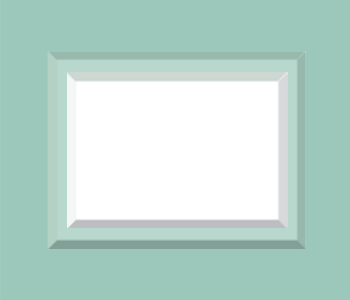
Weighted Bottom
A weighted bottom mat usually has a slightly extended lower border, although it may sometimes be more distinctly elongated. Some say this suits a natural human preference for a solid base. It may also derive from the Golden Mean theory of balance and measurement studied by artists and architects. Whatever the reason, this style is very popular for many types of art.
Museum Mat
A museum mat has significant mat borders at the top and sides, and a distinctly extended lower border. The name comes from the use of this style by art museums for displaying drawings, engravings, and watercolor paintings. Museums prefer to use white, off-white, gray, or other neutral colors, but some people prefer more intensity. In home décor, the museum mat is used to convey a sense of importance, elegance, or contemporary style.

Oriental Mat
Narrow on two opposite sides, much wider on the remaining two sides, this style is meant to mimic the proportions of art on scrolls. The narrow borders are typically about one-third to one-fourth the width of the wide borders. This style is used most often with Asian art prints or paintings on silk, but it works well on any elongated artwork.
Arched Mat
The curved arch has a classical, traditional, or romantic character. The feeling of antiquity makes it appropriate for Renaissance or classical art or vintage photographs. The feeling of romance makes it suitable for wedding and anniversary photos.
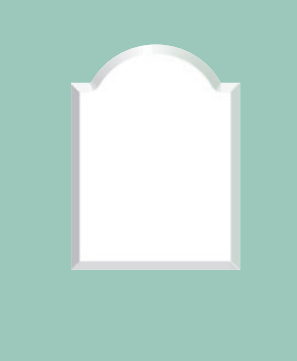
Print Mat
This style has wide sides, with narrower top and bottom borders. This relative newcomer was born out of a rule that says the paper surrounding original artwork should not be trimmed, coupled with the habit of publishers printing original limited edition prints on oversized sheets of paper. This usually results in a very large mat that has a contemporary character.
Oval Mat
An oval opening has a romantic or old-fashioned character. Because the corners of the art will be hidden, oval openings work best when the image is centered. It is often used on vintage photos, wedding photos, old-fashioned silhouette portraits, and needlework. A special mat cutter is required to cut an oval.
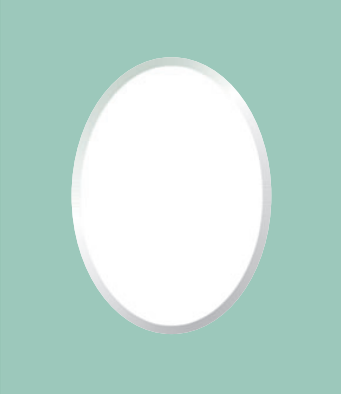
Fabric-Covered Mat
The texture of fabric adds depth and dimension to the framing design. Some matboards are available with fabric already attached, but custom versions can be made at ‘All Custom Framing at Wholesale’. Linen, silk, suede, and velvet are among the most popular fabric choices, although any medium-weight, even-weave fabric is suitable. It is typically used to add rich character to framing, but it can also be rustic or playful, depending on the fabric chosen.
French Mat
This refers to a style of mat surface decoration that originated in Europe for framing watercolors and engravings, but it is also attractive on documents, photographs, and art prints. The French mat consists of ink lines surrounding the mat opening and panels of watercolor washes between the lines. There may be just two lines and one wash of color, or a series of lines and panels. Depending on the colors and design, French mats can look elegant, pretty, or important.

Embellished Mat
Stickers and other paper decorations can be applied to the surface of a mat. A single monogram in one corner, or perhaps a small decorative design in all four corners, can feel formal or elegant. Numerous colorful embellishments scattered all over the mat can look exuberant or playful.
